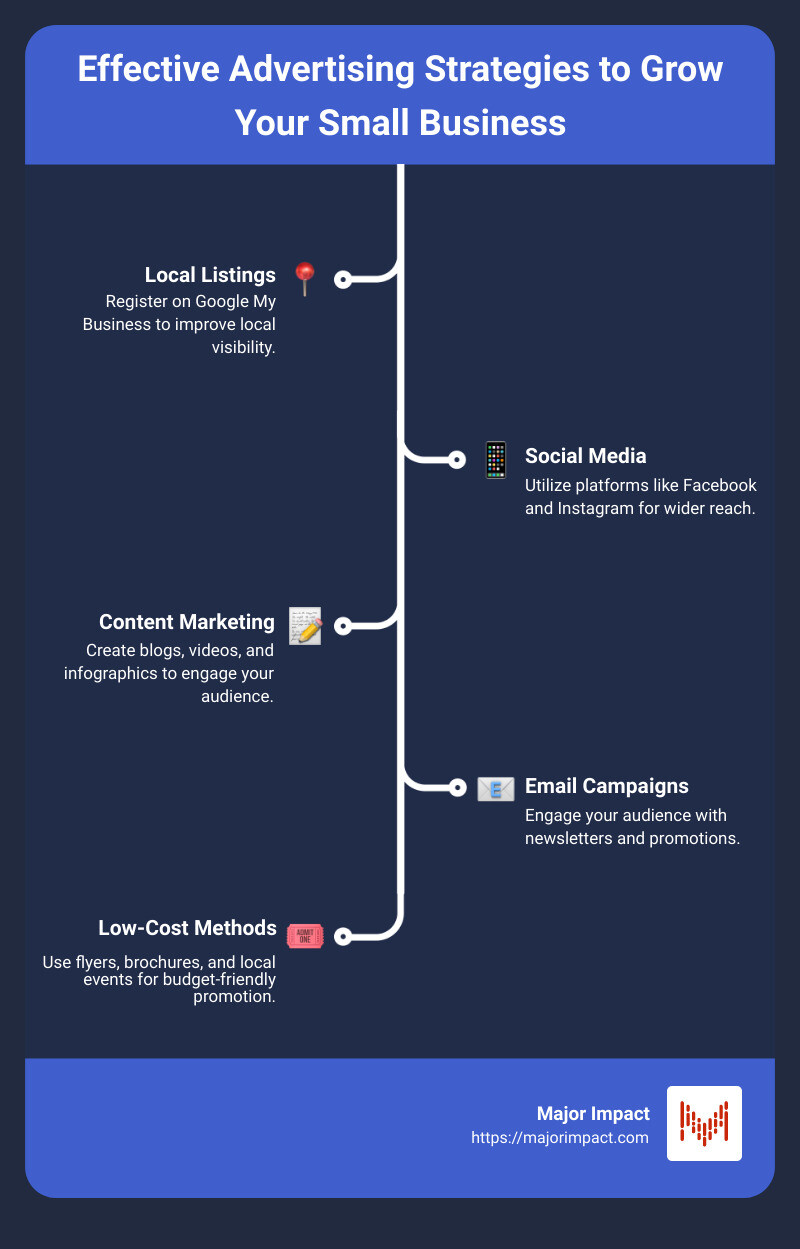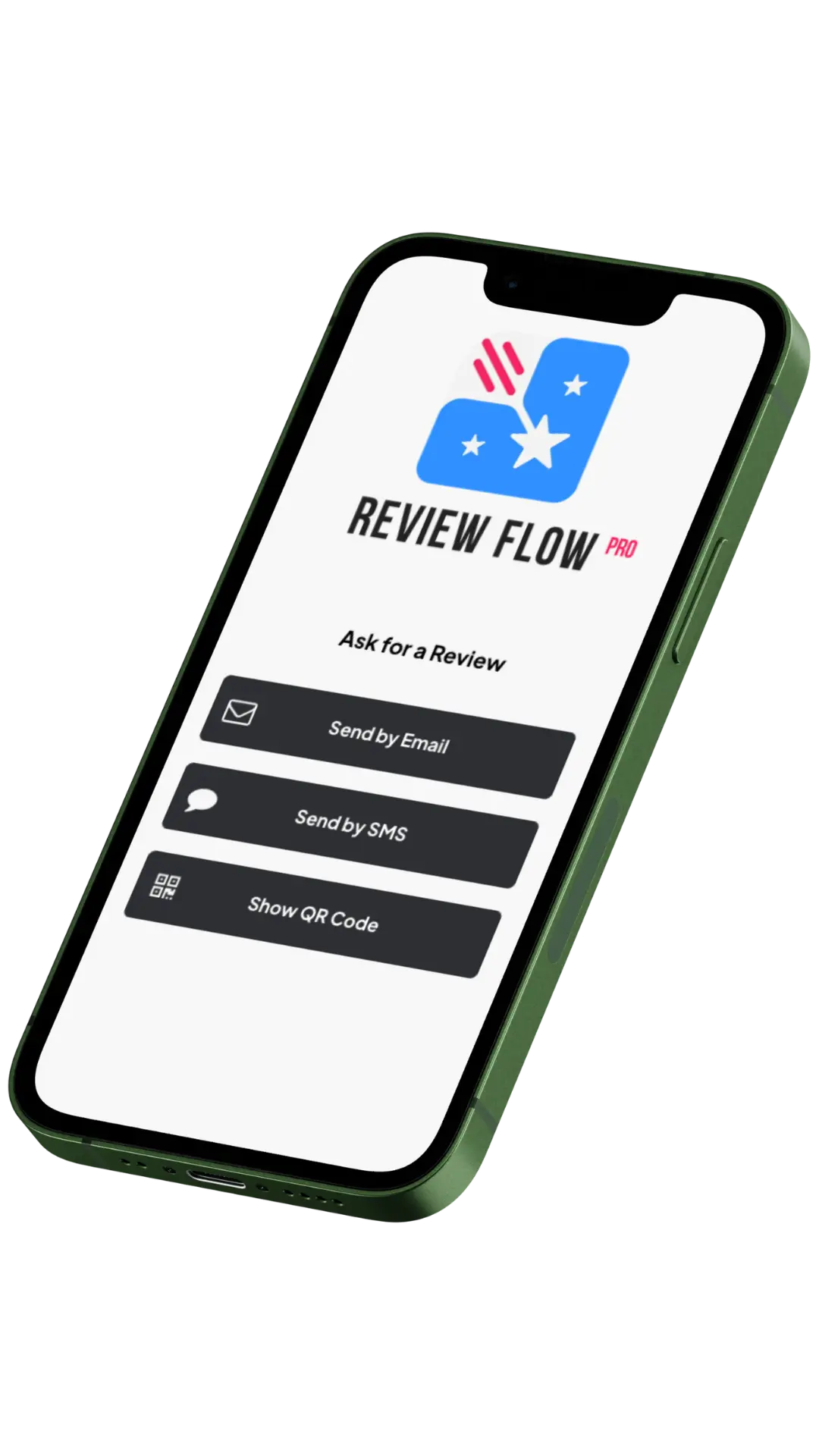Table of Contents
Why Effective Advertising Strategies Matter
To advertise small business effectively, you need a clear and targeted strategy that fits your budget and goals. Here are some quick takeaways to get you started:
- Local Listings: Register on Google My Business.
- Social Media: Utilize platforms like Facebook and Instagram.
- Content Marketing: Create blogs, videos, and infographics.
- Email Campaigns: Engage your audience with newsletters.
- Low-Cost Methods: Use flyers, brochures, and local events.
Advertising is key to attracting new customers and retaining old ones. While traditional methods like print ads and TV commercials can be costly, there are budget-friendly alternatives that can deliver impressive results. By combining innovative online techniques with tried-and-true strategies, you can stand out in today’s competitive market.
I’m Elliott, and I’ve helped generate over 200,000 leads for small businesses across the U.S. With a background in e-commerce, web design, and SEO, I’m passionate about teaching small businesses how to advertise small business effectively and stay local.
Ready to dive deeper into these strategies? Let’s get started.
Optimize Your Google Business Profile
One of the most effective ways to advertise small business is by optimizing your Google Business Profile. This helps you appear in local searches and on Google Maps, making it easier for potential customers to find you.
Create and Verify Your Profile
First things first, you need to create and verify your Google Business Profile. This is like claiming your spot in the digital yellow pages. To get started, follow these steps:
- Sign Up for Google My Business: Go to Google My Business and sign up using your business email.
- Enter Your Business Information: Fill in your business name, address, phone number, and website.
- Verify Your Business: Google offers several verification methods, including postcard, phone, or email. Verification boosts your credibility and ensures your business appears in local searches.
Pro Tip: Make sure the information you provide is accurate and consistent with other online listings to improve your local SEO.
Improve Your Listing
Once your profile is verified, it’s time to make it shine. A well-optimized Google Business Profile can significantly improve your local search rankings and attract more customers. Here’s how:
1. Complete Your Profile Information
Fill out every section of your profile. This includes your business hours, modes of payment, and a detailed business description. Be specific and use keywords relevant to your business to improve your SEO.
2. Add High-Quality Photos
Visuals are crucial. Upload clear, professional photos of your storefront, products, and services. According to Forbes, high-quality visuals can attract more clicks and engagement.
3. Collect and Respond to Reviews
Encourage satisfied customers to leave reviews. Responding to reviews, whether positive or negative, shows you care about customer feedback. This not only boosts your credibility but also improves your rankings in local searches.
4. Post Regular Updates
Keep your profile active by posting updates about new products, services, or special offers. Regular updates signal to Google that your business is active and relevant.
5. Use Relevant Categories
Choose the primary category that best describes your business and add secondary categories for additional services. This helps Google understand what your business offers and match it with relevant searches.
6. Monitor and Update Regularly
Keep your information up-to-date. Whether it’s changing business hours for holidays or adding new services, regular updates ensure your profile remains accurate and trustworthy.
By following these steps, you can optimize your Google Business Profile to attract more local customers and improve your online visibility. Ready to take the next step? Let’s dive into leveraging social media advertising.
Leverage Social Media Advertising
Social media is a powerful tool to advertise small business. Each platform offers unique advantages, so let’s explore how to make the most of them.
Facebook Advertising
Facebook is a versatile platform for reaching a broad audience. Use Facebook Ads Manager to create targeted ads that reach specific demographics based on age, location, interests, and more.
Steps to Get Started:
- Define Your Target Audience: Use Facebook’s targeting options to narrow down who sees your ads.
- Set a Budget: Start small and scale up as you see results. A daily budget of $5-$10 can be effective.
- Monitor Metrics: Keep an eye on key metrics like click-through rates (CTR), cost per click (CPC), and conversions to measure success.
Case Study: A local bakery used Facebook ads to promote a new line of gluten-free products. By targeting health-conscious consumers in their area, they saw a 30% increase in online orders.
Instagram Engagement
Instagram is perfect for visual content. Use Instagram Stories, IGTV, and regular posts to engage your audience.
Tips for Success:
- Post High-Quality Visuals: Invest in good photography and video content.
- Use Stories: Share behind-the-scenes content and quick updates.
- Engage with Followers: Respond to comments and messages to build a community.
Example: A local coffee shop increased foot traffic by 30% by regularly posting engaging content and responding to every comment on their Instagram page.
LinkedIn Networking
LinkedIn is ideal for B2B interactions. Use LinkedIn Groups to connect with professionals in your industry and expand your network.
How to Leverage LinkedIn:
- Join Relevant Groups: Participate in discussions and share valuable insights.
- Optimize Your Business Profile: Make sure your LinkedIn profile is complete and professional.
- Share Industry News: Keep your connections informed about the latest trends and updates in your industry.
Pro Tip: Consistently sharing valuable content can help establish your business as an industry leader.
YouTube Content
YouTube is the second-largest search engine after Google, making it a great platform for video content.
Key Strategies:
- Create a YouTube Channel: Post regular videos that provide value to your audience.
- Use Video Ads: Promote your products or services with engaging video ads.
- Optimize for SEO: Use relevant keywords in your video titles and descriptions to improve searchability.
Example: A small plumbing company created a series of “how-to” videos on common plumbing issues. This not only helped their customers but also built trust and authority in their industry.
Pinterest and TikTok
Pinterest and TikTok are also valuable platforms for specific types of content.
Pinterest:
- Pin High-Quality Images: Link back to your website to drive traffic.
- Create Boards: Organize your content into boards that reflect different aspects of your business.
TikTok:
- Create Short, Engaging Videos: Use special effects to make your content stand out.
- Participate in Trends: Use popular hashtags to increase visibility.
Quote: “Investing in paid social media ads can significantly increase your reach and engagement. It’s a game-changer for small businesses.” – Steve Yanor, Sky Alphabet Social Media
By effectively using these social media platforms, you can create a strong online presence and engage with your audience in meaningful ways. Ready to dive deeper? Next, we’ll explore how to utilize content marketing to grow your business.
Utilize Content Marketing
Content marketing is a powerful way to advertise your small business by providing valuable information that attracts and engages your audience. Let’s dive into three key strategies: starting a business blog, hosting webinars, and launching a podcast.
Start a Business Blog
A business blog is a fantastic way to establish your expertise and improve your website’s SEO. By creating educational articles that address common questions and problems in your industry, you can attract potential customers and build trust.
Tips for an Effective Business Blog:
- Consistency: Post regularly to keep readers engaged.
- SEO Optimization: Use relevant keywords to improve search engine rankings. Tools like Google Keyword Planner can help you find the right keywords.
- Visuals: Include images and videos to make your posts more engaging.
Case Study: A local bakery started a blog sharing baking tips and recipes. They also created tutorial videos and infographics about baking techniques. Over time, they became a trusted resource in their community, leading to increased sales and customer loyalty.
Host Webinars
Webinars are an excellent way to showcase your industry expertise and engage with your audience in real-time. They allow you to provide valuable information, answer questions, and build a personal connection with potential customers.
Benefits of Hosting Webinars:
- Industry Expertise: Position yourself as a thought leader in your field.
- Customer Engagement: Interact with your audience and address their concerns.
- Video Content: Record your webinars and repurpose them as video content for your website or social media.
Example: A financial advisor could host a webinar on “How to Plan for Retirement,” providing valuable insights and answering participant questions. This not only helps potential clients but also builds trust and credibility.
Launch a Podcast
Podcasts are a growing medium that allows you to reach your audience in a more personal and engaging way. By sharing your knowledge and inviting guest experts, you can create content that resonates with listeners and establishes your authority in your industry.
Key Elements of a Successful Podcast:
- Consistent Episodes: Release episodes regularly to keep your audience engaged.
- Industry Authority: Share your expertise and invite guest appearances to provide diverse perspectives.
- Engaging Format: Keep your episodes interesting and informative.
Quote: “Podcasts are a fantastic way to connect with your audience on a deeper level. They allow you to share your voice and build a loyal following.” – John Lee Dumas, Host of Entrepreneurs on Fire
By implementing these content marketing strategies, you can attract and engage your audience, establish your expertise, and ultimately grow your small business.
Next, let’s explore how to implement email marketing to maintain customer engagement and drive sales.
Implement Email Marketing
Email marketing is a powerful way to keep your customers engaged and drive sales. Let’s dive into the key steps to get started.
Build an Email List
To start, you need an email list. Here are some effective ways to build one:
- Lead Magnets: Offer something valuable, like a free eBook, discount, or exclusive content, in exchange for email addresses.
- Sign-Up Forms: Place these on your website, especially on your homepage, blog, and contact page.
- Customer Segmentation: Organize your list into segments based on interests, purchase history, or demographics. This helps you send more targeted emails.
Tip: Use tools like Mailchimp and Constant Contact to manage your email list and create sign-up forms.
Create Engaging Newsletters
Once you have an email list, it’s crucial to keep your subscribers engaged. Here’s how:
- Valuable Content: Provide useful information, such as tips, industry news, or how-to guides.
- Promotions: Include special offers or discounts to encourage purchases.
- Customer Updates: Share news about your business, like new products or services.
Case Study: Landcafe.pl increased their sales rate by 41.30% through educational welcome emails. They shared tips on using their products effectively, which engaged customers and built trust.
Automate Email Campaigns
Automation makes your email marketing more efficient and effective. Here are some strategies:
- Email Automation Tools: Use platforms like Mailchimp to set up automated emails.
- Drip Campaigns: Send a series of emails over time to nurture leads and guide them through the sales funnel.
- Personalized Messages: Use the recipient’s name and tailor content to their interests for better engagement.
Example: A local spa might set up an automated email sequence offering a discount on the first visit, followed by tips on relaxation and wellness.
By implementing these email marketing strategies, you can maintain customer engagement, drive sales, and grow your small business.
Next, let’s explore low-cost advertising methods to further boost your business’s visibility.
Explore Low-Cost Advertising Methods
Advertising doesn’t have to break the bank. There are numerous inexpensive ways to get the word out about your small business. Here are some effective strategies:
Distribute Flyers and Brochures
Flyers and brochures are classic, cost-effective tools for local advertising. They can be distributed in neighborhoods, coffee shops, and community centers.
- Inexpensive: Printing flyers and brochures is relatively cheap, especially if you design them yourself using online tools.
- Local Distribution: Target specific areas where your potential customers are likely to be. For example, a residential cleaning service might focus on neighborhoods with busy professionals.
- Incentives: Include a coupon or special offer to encourage immediate action.
Example: A local bakery saw a 20% increase in customer engagement by distributing flyers with a discount coupon in nearby residential areas.
Participate in Local Events
Getting involved in local events is a fantastic way to increase your business’s visibility and connect with the community.
- Community Involvement: Sponsor or participate in local festivals, charity events, or farmers’ markets.
- Brand Awareness: Set up a booth and hand out samples, brochures, or branded merchandise.
- Networking: Engage with event attendees and other local businesses to build relationships.
Case Study: A small med spa promoted a new skincare treatment by participating in a local health fair, leading to a significant uptick in bookings.
Partner with Other Businesses
Partnering with complementary businesses can expand your reach without extra cost.
- Cross-Promotion: Work with businesses that offer services or products that complement yours. For instance, a gym could partner with a nutritionist.
- Client Base Expansion: Tap into each other’s customer bases to increase exposure.
- Joint Events: Host joint workshops or webinars to provide value to both audiences.
Quote: “One of the best ways to market for free is to find other business owners offering complementary services and possessing your ideal audience.” – Nadya Rousseau, Alter New Media LLC
Example: A local car repair shop partnered with a tire store to offer a discount on tire services, benefiting both businesses.
By exploring these low-cost advertising methods, you can effectively advertise your small business without a hefty budget. Next, let’s address some frequently asked questions about advertising small businesses.
Frequently Asked Questions about Advertising Small Businesses
How can I advertise my small business cheaply or for free?
There are several ways to advertise your small business without spending a lot of money. Here are some effective strategies:
- Google My Business: Create and verify your Google Business Profile to boost local visibility. This is free and helps customers find you easily on Google Maps and search results.
- Social Media: Utilize platforms like Facebook, Instagram, and TikTok. Engage with your audience through posts, stories, and community groups. Facebook community groups, in particular, are a great place to start.
- Content Marketing: Start a blog on your website and share valuable content related to your industry. This can drive organic traffic and establish you as an authority.
- Email Marketing: Build an email list and send out regular newsletters with updates, promotions, and valuable content. Tools like Mailchimp offer free plans for small businesses.
- Local Listings: Ensure your business is listed in local directories like Yelp and Yahoo. Most of these are free and increase your visibility in local searches.
- Networking: Attend local business meetings and networking events. This can help you build relationships and get word-of-mouth referrals.
- Referral Programs: Encourage your existing customers to refer new ones by offering incentives like discounts or free products.
What is the best way to advertise a small business?
The best way to advertise a small business depends on your specific goals and audience. However, some universally effective methods include:
- Paid Search Marketing: Use Google Ads to target specific keywords related to your business. Focus on long-tail keywords for higher click-through rates and conversions.
- Social Media Advertising: Platforms like Facebook and LinkedIn offer targeted advertising options. You can reach specific demographics based on age, gender, interests, and more.
- Local Listings: Ensure your business is listed on Google My Business and other local directories. This improves your local search visibility.
- Website: Have a well-designed, SEO-optimized website. Use platforms like WordPress for better SEO capabilities.
- Referral Promotion: Implement a referral program to incentivize your existing customers to bring in new ones.
- Flyers and Brochures: Distribute these in your local area to create buzz and attract customers.
How do I market my small business locally?
Marketing your small business locally involves several strategies to reach your community:
- Google My Business: Optimize your profile with accurate information, photos, and customer reviews. This helps you appear in local search results.
- Local Events: Participate in or sponsor community events. This increases your visibility and allows you to connect with potential customers.
- Local Partnerships: Partner with other local businesses to cross-promote each other’s services. This expands your reach to their customer base.
- Flyers and Brochures: Distribute these in local areas where your target audience frequents, such as coffee shops, libraries, and community centers.
- Bulletin Boards: Post flyers on local bulletin boards in places like grocery stores and community centers.
- Press Releases: Send out press releases to local media when you have newsworthy updates, such as a new product launch or an upcoming event.
- Networking: Join local business groups and attend networking events to build relationships and get referrals.
By implementing these strategies, you can effectively advertise your small business and reach your local audience.
Conclusion
Advertising your small business doesn’t have to be overwhelming or expensive. By optimizing your Google Business Profile, leveraging social media, utilizing content marketing, implementing email campaigns, and exploring low-cost advertising methods, you can effectively reach your target audience and grow your business.
By implementing just a few of these strategies, you’ll be well on your way to effectively advertise your small business and achieve your business goals.










